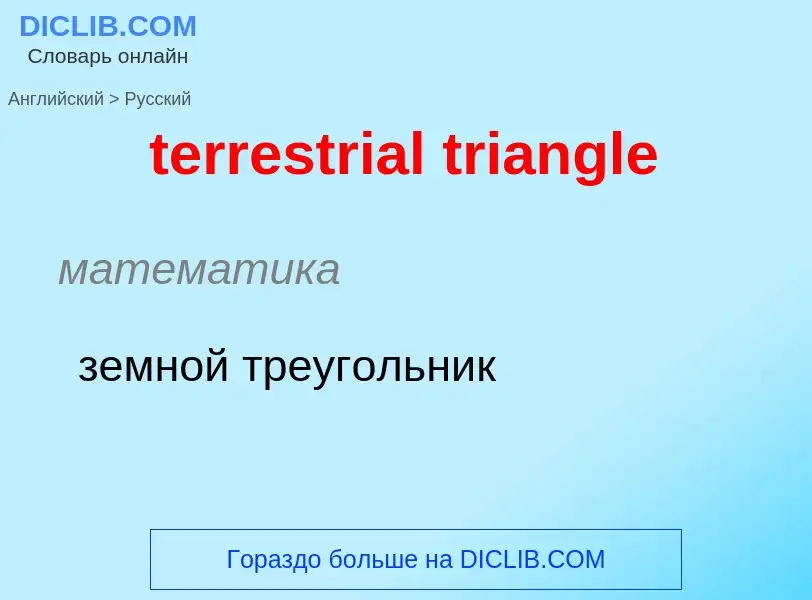Перевод и анализ слов искусственным интеллектом ChatGPT
На этой странице Вы можете получить подробный анализ слова или словосочетания, произведенный с помощью лучшей на сегодняшний день технологии искусственного интеллекта:
- как употребляется слово
- частота употребления
- используется оно чаще в устной или письменной речи
- варианты перевода слова
- примеры употребления (несколько фраз с переводом)
- этимология
terrestrial triangle - перевод на русский
математика
земной треугольник
общая лексика
равносторонный треугольник
Определение
Википедия
Terrestrial Time (TT) is a modern astronomical time standard defined by the International Astronomical Union, primarily for time-measurements of astronomical observations made from the surface of Earth. For example, the Astronomical Almanac uses TT for its tables of positions (ephemerides) of the Sun, Moon and planets as seen from Earth. In this role, TT continues Terrestrial Dynamical Time (TDT or TD), which succeeded ephemeris time (ET). TT shares the original purpose for which ET was designed, to be free of the irregularities in the rotation of Earth.
The unit of TT is the SI second, the definition of which is based currently on the caesium atomic clock, but TT is not itself defined by atomic clocks. It is a theoretical ideal, and real clocks can only approximate it.
TT is distinct from the time scale often used as a basis for civil purposes, Coordinated Universal Time (UTC). TT is indirectly the basis of UTC, via International Atomic Time (TAI). Because of the historical difference between TAI and ET when TT was introduced, TT is approximately 32.184 s ahead of TAI.


